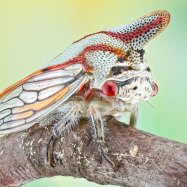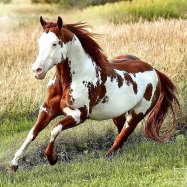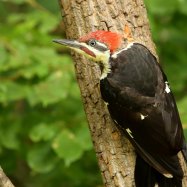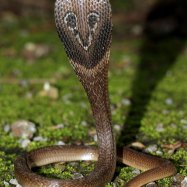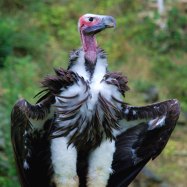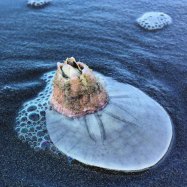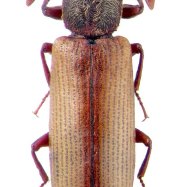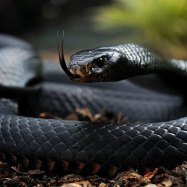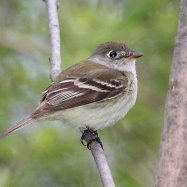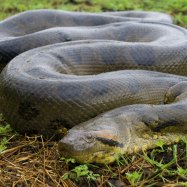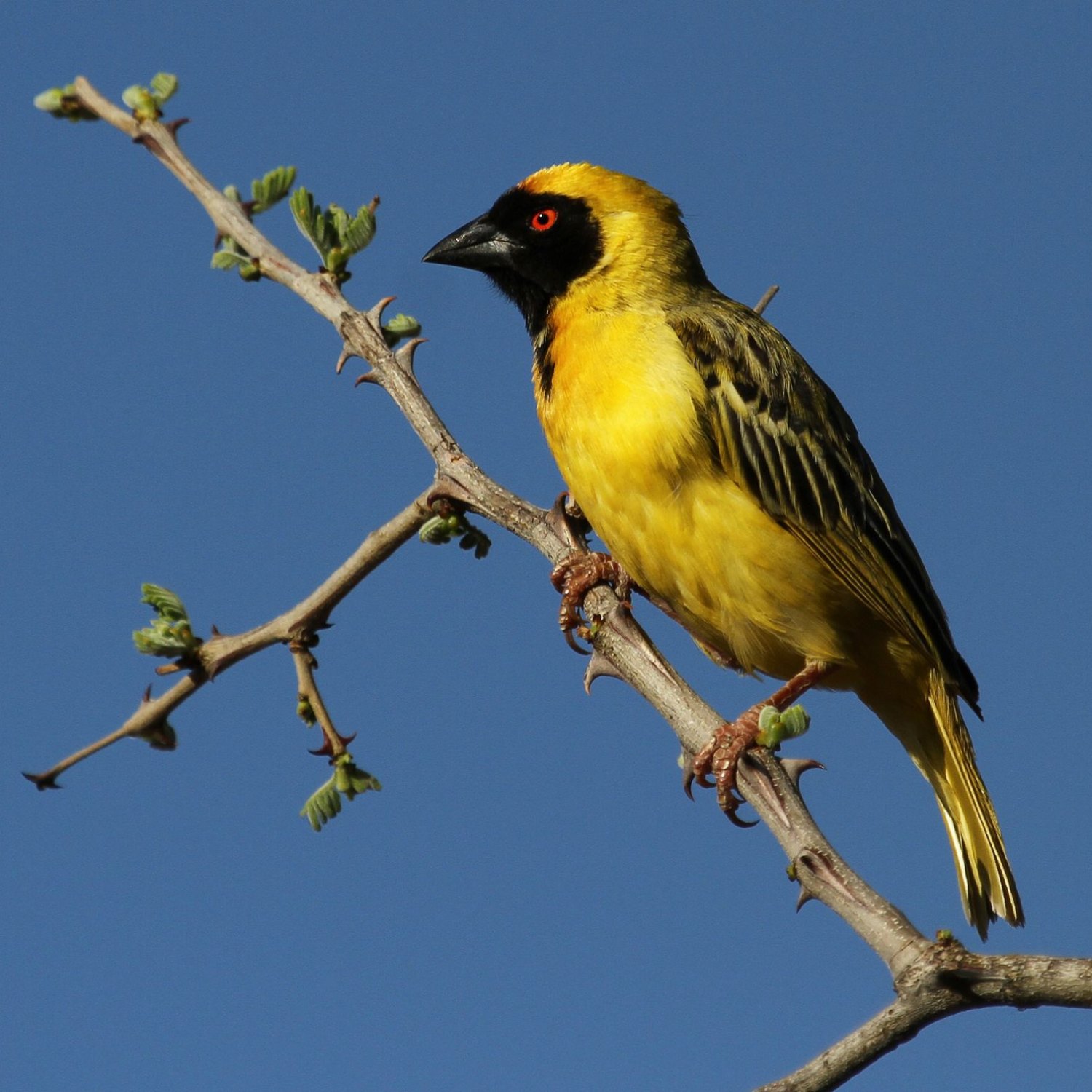
Weaver Bird
10 to 20 cm
Weaver birds are a diverse group of small to medium-sized birds found in various locations. Belonging to the Ploceidae family, these birds are known for their impressive nest-building skills and unique woven nests. Ranging from 10 to 20 cm in length, these birds are a sight to behold with their vibrant plumage and intricate nests. Keep an eye out for these cleverly crafted nests on your next outdoor adventure! #WeaverBird #Ploceidae #BirdWatching #NatureInspiration
Animal Details Summary:
Common Name: Weaver Bird
Kingdom: Animalia
Habitat: Grassland, Savanna, Wetland
Magnificent Weaver Birds: The Master Crafters of Africa
Africa is home to some of the most incredible and diverse wildlife in the world. From majestic elephants to fearsome lions, it is a continent rich in natural wonders. Among these wonders are the magnificent Weaver birds, a group of small to medium-sized birds known for their incredible ability to build intricate and complex nests. These birds belong to the family Ploceidae and are commonly referred to as Weaver birds Weaver Bird.Weaver birds are found in different parts of Africa, including Madagascar. They are characterized by their vibrant colors and unique behaviors, making them a fascinating subject for researchers and animal enthusiasts alike. In this article, we will delve into the world of Weaver birds, exploring their habitat, feeding methods, geographical distribution, and more.
## The Weaver Bird Family
Scientifically known as Ploceidae, the Weaver bird family consists of more than 50 species of birds. These birds are part of the class Aves, which comprises all birds, and the order Passeriformes, which includes over half of all bird species. The Weaver bird family is further divided into two subfamilies, the Ploceinae, and the Euplectes.
Weaver birds are easily recognizable due to their small to medium-sized bodies, measuring between 10 to 20 cm in length. They have strong, conical beaks, which are well-suited for their unique feeding methods. The coloration of Weaver birds varies greatly, ranging from dull brown to vibrant yellow and red Willow Flycatcher. This diversity in color adds to their charm and makes them a visually appealing species.
## Habitat and Distribution
Weaver birds can be found in various habitats, including grasslands, savannas, and wetlands. They are highly adaptable birds and can thrive in both open areas and more densely wooded regions. These birds have also been observed to coexist with humans, often building their nests in and around human settlements.
The geographical distribution of Weaver birds is limited to the African continent and Madagascar. Within Africa, they can be found in various countries, including Kenya, Tanzania, Uganda, and South Africa. This widespread distribution makes them easily accessible to researchers and wildlife enthusiasts from all over the world.
## The Master Crafters
One of the most intriguing aspects of Weaver birds is their exceptional nest-building abilities. These birds are known to create intricate and complex nests, often weaving grass, leaves, and other materials into intricate patterns. Each Weaver bird species has a unique nest design, and male birds are responsible for constructing these nests to attract potential mates.
The nest-building process is a remarkable feat that requires precision and skill. Male Weaver birds string blades of grass, reeds, and other materials through and around a branch, creating a spherical or oval-shaped nest. These nests not only serve as a safe haven for eggs and young chicks but also offer protection from predators.
The attention to detail and intricacy of Weaver bird nests has captured the interest of scientists and researchers. In fact, many engineers have studied the structure and strength of these nests to gain inspiration for their own designs. The nests of Weaver birds have been found to withstand severe weather conditions, such as strong winds and heavy rain, proving their remarkable abilities as master crafters.
## Feeding Habits
As omnivores, Weaver birds have a varied diet that includes insects, seeds, and nectar. They are skilled hunters, and their cone-shaped beaks are well-suited for catching insects. Weaver birds also have a unique feeding strategy, where they use their beaks to extract seeds from grass stems.
During breeding season, Weaver birds have been observed to switch to a primarily insect-based diet to provide their young with the protein they need to grow and develop. They are also known to eat nectar from flowers, making them important pollinators in their habitats.
## Conservation Status
Unfortunately, like many other species in Africa, Weaver birds face threats from habitat destruction and human interference. The conversion of grasslands into agricultural land and urbanization has led to a decline in the Weaver bird population. These birds are also hunted for their colorful feathers in some regions.
Thankfully, there is hope for the preservation of these magnificent birds. Many organizations and conservation efforts are working towards protecting the habitats of Weaver birds and educating the public about their importance. Governments in African countries are also taking steps to protect these birds and their habitats, ensuring their survival for future generations.
## A Symbol of Resilience
Weaver birds are not only impressive creatures but also symbols of resilience and adaptability. Their remarkable ability to thrive in diverse habitats and their unparalleled nest-building skills serve as a reminder of the beauty and diversity of the natural world. These birds are an essential part of the African ecosystem, and their presence is a testament to the delicate balance of nature.
In conclusion, Weaver birds are a marvel of nature, captivated by their vibrant colors, intricate nests, and adaptability. They are a vital part of the African ecosystem and a beautiful representation of nature's resilience. It is our responsibility to ensure the survival of these birds and their habitats, for they are truly a treasure worth preserving.

Weaver Bird
Animal Details Weaver Bird - Scientific Name: Ploceidae
- Category: Animals W
- Scientific Name: Ploceidae
- Common Name: Weaver Bird
- Kingdom: Animalia
- Phylum: Chordata
- Class: Aves
- Order: Passeriformes
- Family: Ploceidae
- Habitat: Grassland, Savanna, Wetland
- Feeding Method: Omnivorous
- Geographical Distribution: Africa, Madagascar
- Country of Origin: Various
- Location: Various
- Animal Coloration: Varies
- Body Shape: Small to medium-sized
- Length: 10 to 20 cm
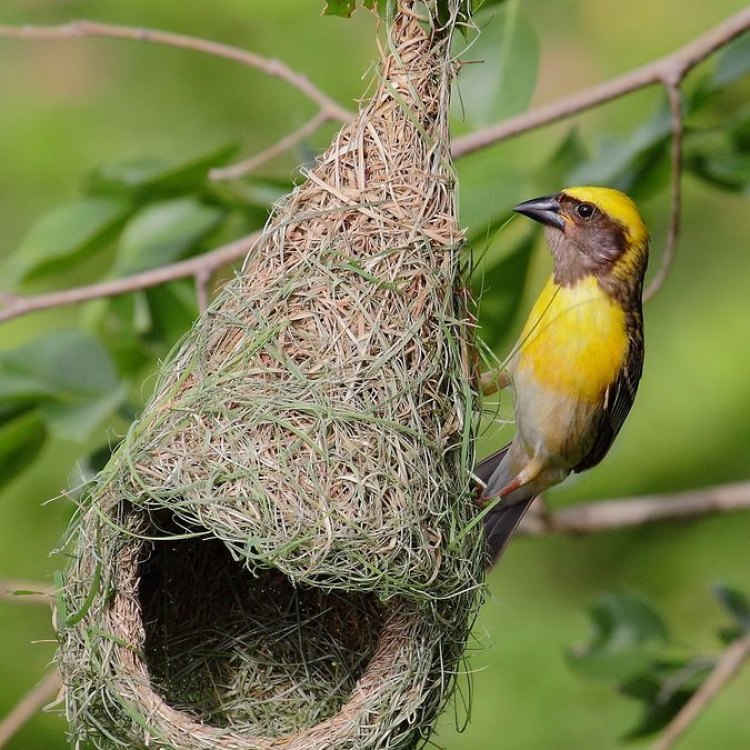
Weaver Bird
- Adult Size: Small to medium-sized
- Average Lifespan: 3 to 7 years
- Reproduction: Egg laying
- Reproductive Behavior: Polygynous
- Sound or Call: Varies
- Migration Pattern: Some migratory species
- Social Groups: Colonial
- Behavior: Highly social and territorial
- Threats: Habitat loss, nest predation
- Conservation Status: Varies by species
- Impact on Ecosystem: Pollination, seed dispersal
- Human Use: Ornamental bird
- Distinctive Features: Elaborate nest building
- Interesting Facts: Weaver birds are known for their intricate and elaborate nests, which are woven using grass and other plant materials. Male weaver birds build multiple nests to attract females, and the females choose the nest they deem most suitable. These birds are highly social and form large colonies, sometimes with hundreds or even thousands of individuals. They are also known for their colorful plumage and their melodious songs.
- Predator: Snakes, raptors, mammals
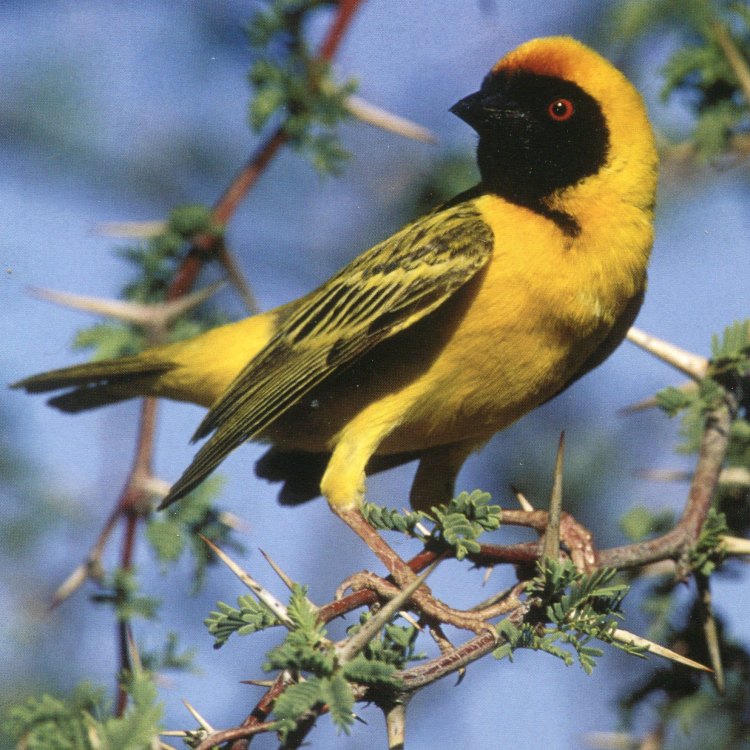
Ploceidae
The Fascinating World of Weaver Birds: Nature's Master Weavers
From the treetops of Africa to the grasslands of Australia, the captivating world of weaver birds is truly a sight to behold. These small to medium-sized birds are known for their intricate and elaborate nest building, forming large colonies, and their strikingly colorful plumage. But what makes these birds truly unique is their remarkable ability to weave intricate nests using grass and other plant materials. In this article, we will take a closer look at the fascinating world of weaver birds and discover what makes them such incredible creatures PeaceOfAnimals.Com.Adult Size
Weaver birds are small to medium-sized birds, with an average length of 10-25 cm (4-10 inches) and a weight of 15-70 grams (0.5-2.5 ounces). They have a robust build, with short, strong feet and conical beaks, perfectly suited for their active and social lifestyles. With their colorful plumage and lively personalities, these birds are a true delight to observe in the wild.
Average Lifespan
The average lifespan of a weaver bird is 3 to 7 years, with some species living up to 10 years in captivity. Their lifespan in the wild can vary due to various factors such as predators, disease, and availability of resources. Despite their relatively short lifespan, weaver birds make the most of their time, building and maintaining their elaborate nests and contributing to the balance of their ecosystem.
Reproduction
Weaver birds reproduce through egg laying, with females laying an average of 2-4 eggs in their elaborate nests Wolf Snake. These nests are not only used for rearing young but also serve as a means of attracting potential mates. Males put in considerable effort and creativity to build multiple nests, hoping to impress the females and secure a mating partner.
Reproductive Behavior
One interesting aspect of weaver birds' reproductive behavior is their polygynous nature. This means that a single male weaver bird may have multiple female mates within the same breeding season. The male will then divide his time between caring for the eggs and nestlings in each nest, ensuring the survival of his genetic offspring.
Sound or Call
Weaver birds are not known for their distinct calls, unlike other bird species. However, they do produce various sounds, such as high-pitched chirps and twittering calls, as a means of communication within their colony. These sounds help maintain the social hierarchy within the colony, and also serve as a warning signal for potential threats.
Migration Pattern
While some weaver bird species are known to be migratory, others are resident birds that stay in their habitat throughout the year. For example, the red-billed quelea, found in Africa, is known for its massive migrations, with flocks of thousands of birds moving in search of food and water. In contrast, the Asian golden weaver is a resident bird, staying in its range for the entire year.
Social Groups
Weaver birds are highly social and form large colonies, sometimes with hundreds or even thousands of individuals. Within these colonies, individual birds form smaller groups, often based on family units. They often nest in close proximity to one another, creating a cohesive and interconnected web of nests.
Behavior
As highly social and territorial creatures, weaver birds have distinct behaviors within their colonies. Males are competitive and actively defend their nests from other males, often engaging in fierce confrontations. Females, on the other hand, focus on caring for the young and maintaining the nest. These birds also have a unique courtship dance, where the male bobs and weaves to show off his nest-building skills.
Threats
Despite their remarkable abilities, weaver birds face several threats, primarily due to habitat loss and nest predation. As their natural habitats are converted into farmlands and urban areas, these birds lose their nesting sites and food sources. Additionally, predators such as snakes, raptors, and mammals pose a threat to both adult birds and their nestlings.
Conservation Status
The conservation status of weaver birds varies by species, with some facing declining populations due to habitat loss and other threats. For example, the Cape weaver is listed as Near Threatened on the IUCN Red List, while the Sociable Weaver is considered to be of Least Concern. Conservation efforts such as protecting their habitats and promoting sustainable farming practices can help preserve these unique birds for future generations.
Impact on Ecosystem
Weaver birds may seem like just another colorful bird in the wild, but their presence has a significant impact on their ecosystem. As pollinators, they play a crucial role in the reproduction of plants, while their foraging activities help disperse seeds, contributing to the growth and diversity of vegetation. Their nesting habit, which involves weaving together different materials, also helps recycle nutrients in the ecosystem.
Human Use
In addition to their important role in the ecosystem, weaver birds also have a human use – as ornamental birds. Due to their striking plumage and unique behaviors, they are popular in aviculture as pets or for display in zoos and bird sanctuaries. However, it is crucial to ensure that these birds are not taken from the wild, as this can contribute to declining populations in their natural habitats.
Distinctive Features
Weaver birds are known for their elaborate and intricate nests, which are woven using grass and other plant materials. These nests are not just functional but are also visually stunning, with various designs and patterns. Male weaver birds put in a lot of effort to build multiple nests, sometimes up to 30 in a breeding season, to attract females. The females then choose the nest they find most suitable, often adding their own finishing touches to the nest before laying their eggs.
Interesting Facts
Weaver birds are full of surprises, and their fascinating behavior and unique features make them truly intriguing creatures. Here are a few interesting facts about these birds:
- Weaver birds are known for their melodious songs, with some species able to mimic the sounds of other birds.
- Weaver birds use their specially designed bills, which are stronger and more robust than other bird species, to weave their nests.
- The Sociable Weaver is known for building the largest communal nest of any bird species, which can house hundreds of birds.
- Weaver birds have a unique adaptation that allows them to see and grab onto the grass stems they use for nest building while in flight.
- In some African cultures, the presence of weaver birds is considered a good omen, with their nests representing prosperity and wealth.
Predators
Despite their impressive nest building skills and social behaviors, weaver birds face a significant threat from predators. Snakes, raptors, and mammals, such as genets and monkeys, are known to prey on weaver birds, particularly during nesting season when the birds are more vulnerable. To protect themselves and their nests, these birds rely on their strong social bonds and communication within the colony to alert others of potential threats.
In conclusion, weaver birds are truly remarkable creatures, with their elaborate nest building, striking plumage, and lively social behaviors. Their presence in the wild is not only a visual treat but also crucial for the balance of their ecosystem. By understanding and appreciating these birds, we can ensure their continued existence and the preservation of their unique and fascinating world. So next time you spot a weaver bird, take a moment to admire their intricate nests and remarkable abilities, and consider yourself lucky to witness nature's master weavers in action.
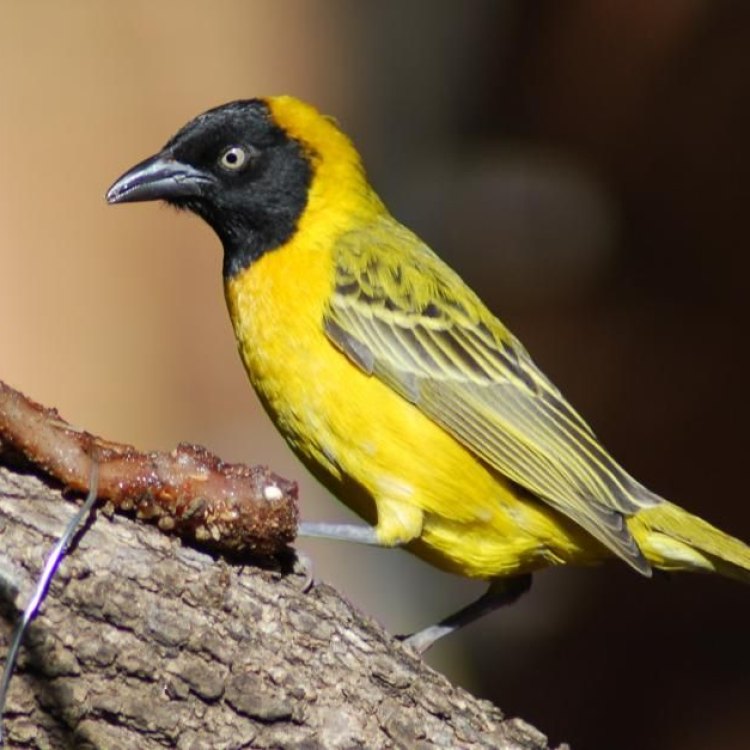
Magnificent Weaver Birds: The Master Crafters of Africa
Disclaimer: The content provided is for informational purposes only. We cannot guarantee the accuracy of the information on this page 100%. All information provided here may change without prior notice.

